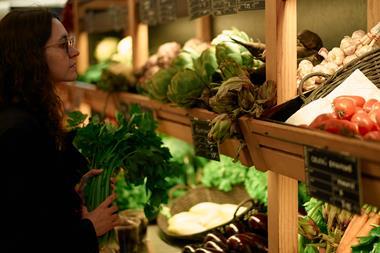The market value of sweet spreads has been declining since 1997. In 2000, sales reached £245m, an increase of just 2% since 1995.
However, the rate of decline has been softened by a shift towards higher fruit and lower sugar content jams and other premium marmalades and honey, which tend to be more expensive.
All sectors of the market have lost sales since 1998, with the exception of chocolate spreads, which have maintained their sales levels. Health issues relating to sugar consumption remain a barrier to sweet spread growth, particularly from parents with young children and people watching their weight.
Sweet spreads have no doubt suffered because of this and the sector has witnessed a shift in tastes to lower sugar and extra fruit spreads. One major problem for the sector has been the distinct lack of above-the-line promotional expenditure. Advertising spend for 2000 fell to an all-time low of £719,000, a decrease of 73% since 1995 and a fall of 53% over 1999.
Distribution of sweet spreads, as with most food items, continues to be dominated by the major multiples. About 80% of the total value of sweet spreads is sold through these outlets.
An increase in floor space and strength in buying power shore up the major multiples' dominance. Without their support and shelf space, it becomes increasingly difficult for a producer to distribute or launch bring new products and flavours.
Approximately 89% of housewives had bought a sweet spread in the three months to January 2001. By far the most popular was jam, with 65% of all housewives buying it. Marmalade was bought by around half of housewives, a decline of eight percentage points since 1997.
{{P&P }}
Close menu
- Home
- Retail & Wholesale
-
Products & Suppliers
- Back to parent navigation item
- Products & Suppliers
-
Product Categories:
- Back to parent navigation item
- Product Categories:
- Alcoholic drinks
- Bakery
- Cereals & breakfast
- Cheese
- Chicken & poultry
- Chocolate
- Confectionery
- Crisps, nuts & snacks
- Dairy
- Fish
- Fresh produce
- Frozen
- Household
- Meat
- Own Label
- Sauces & condiments
- Seasonal
- Soft drinks
- Vaping
- Vegan & plant-based
- World foods
- Suppliers
- People
- Reports & Data
-
Topics A-Z
- Back to parent navigation item
- Topics A-Z
-
Popular topics:
- Back to parent navigation item
- Popular topics:
- Cost of living crisis
- Crime
- Deposit Return Schemes
- Finance
- Government & Regulation
- Health
- Inflation
- Loyalty
- Marketing
- Mergers & Acquisitions
- New Product Development
- Sourcing
- Supply chain
- Sustainability & environment
- Technology
- Ultra Processed Foods
- Vaping
- A-Z all topics
- Content by type:
- Events
- Ask iA (beta)
- Subscribe now
Sign in to comment on this article
Not logged in before? Register for FREE guest access today.
You will be able to:
- Read more stories
- Receive daily newsletters
- Comment on stories
Advert

















No comments yet